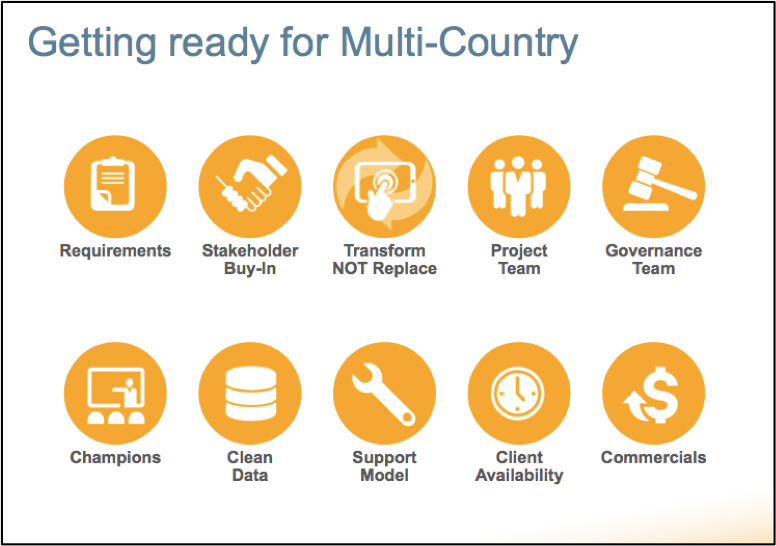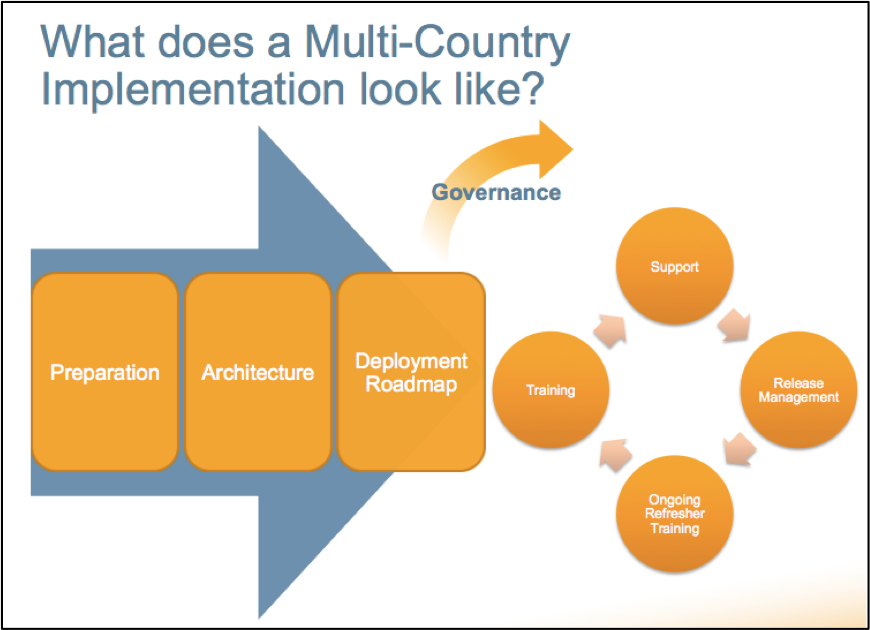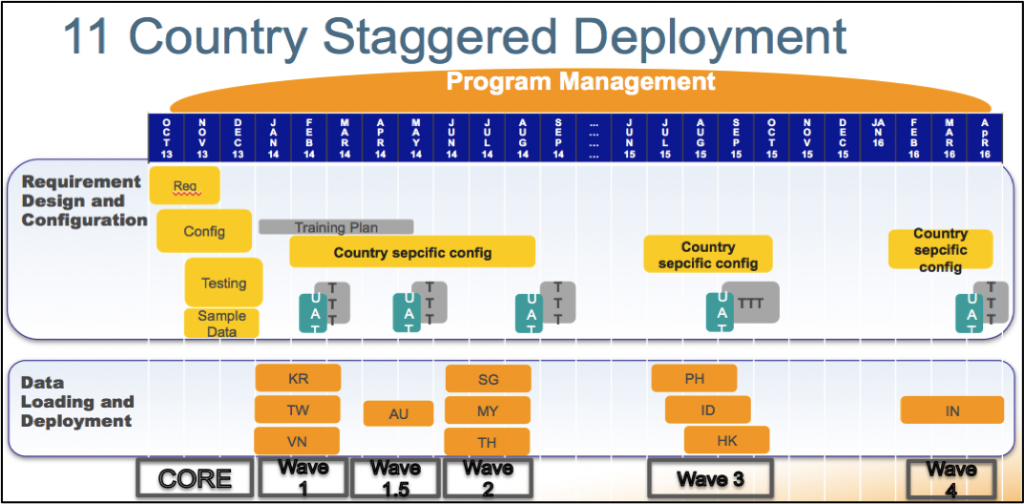Multi-Country Implementations
In Asia Pacific, customers are often looking to standardize and roll out a scalable solution that also fits the needs of the individual markets.
With Veeva, companies can choose how to deploy, what to deploy and when to deploy to individual markets. Veeva focuses on implementing best practices and ensuring that customers get the best return on investment. Go-Live is the start of the journey as compared to the end of the journey in traditional software implementation.
Requirements is a minor piece of the puzzle, customers want to achieve the following:
First Step – Deciding the architecture: Architecture decisions are based on
Some questions to ask yourselves
Governance
- Process for collecting and managing requirements?
- Process for prioritizing goals?
Regional Standards
Country Specific Requirements
Support and Administration


Keys to Success
Stakeholder Buy-In and Alignment
Good Governance
Strong Project Team
Realistic Deployment roadmap
Internal Champions
Change Management
Great Training
Smooth transition to support
Clean Requirements
Transform Not Replace
—ƒ
Example of a staggered multi-country rollout

Req: Requirements Gathering | Config: Configuration | UAT: User Acceptance Testing | TTT: Train The Trainer
In the above example, not all countries were ready to embark on a new system, and were restricted by availability, existing contracts with other service providers and general readiness.
Veeva Professional services team worked with the customers regional team and project team to develop a core architecture model and define a strong foundation. Over a period of time depending on when countries wanted to adopt Veeva, a project plan was created and countries were on-boarded on to the application.
The customer’s regional team also wanted to ensure that some of the features and functionalities released as part of the version upgrades (three upgrades every year), could be leveraged by every country. As part of the engagement, the services team worked with the customer to continuously enhance the product. In some cases the customer was able to handle these enhancements independently without any support from Veeva.
Contact us to learn more about different implementation methodologies and to prepare for a multi-country rollout—¦.
